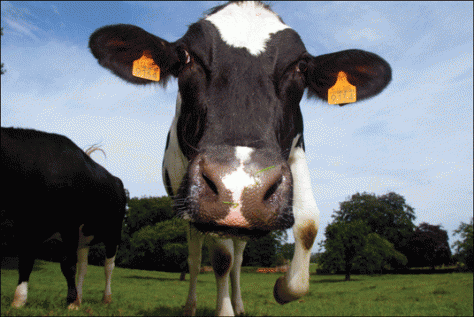The European Commission announced at the Paris ‘Salon de ’Agriculture’ on the 19th–27th February 2011 that it is preparing a proposal for electronic identification of bovines, upgrading the existing plastic tagging system. This move by DG SANCO, the European Commission’s Directorate General for Health and Consumers, aims to further strengthen the current system of bovine traceability in the EU.
The traceability of animals and animal products across Europe plays an important role in protecting both animal and consumer health. Traceability systems in place must be able to identify where products have come from and where they are going.
The current system of traceability is perceived as being efficient by most stakeholders in terms of consumer protection. However, by introducing electronic tagging and e-reading (electronic reading), this new traceability system will be more accurate and faster, making it easier to trace animals and food products for veterinary and food safety purposes.
E-reading is a huge benefit when it comes to managing disease outbreaks when they occur. Electronic identification if used in conjunction with e-reading will simplify the current procedures and will help reduce administrative work and identification errors. Other benefits of electronic tagging will be breed improvement and fraud prevention.
The traceability system has already proven valuable. Currently, all bovine notifications (such as births, deaths and animal movements) must be manually registered and converted into an electronic format in a computerised database. The new system will make this much more straightforward, and has proved to be an excellent tool for improving farm management and on-farm automation, and can ultimately contribute to increasing the competitiveness of the sector.
The European Commission plans to present its proposal to EU Member States during 2011. A European Commission Official said: “The date for implementation is not yet known but it will depend on the pace of progress of work in the Council and the European Parliament.”
Currently there is specific EU legislation on the use of electronic identification for other animals in the EU (e.g. pets, horses, sheep and goats), but with bovine electronic identification it could mean an estimated 90 million animals may be included into the digital control system.


